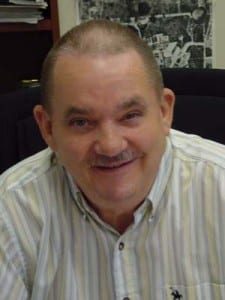Book Profiling Early Botanist Takes Spotlight in New Smithsonian Magazine

The biography of a little-known French botanist is bringing UCF to the pages of the prestigious Smithsonian Magazine.
Biology Professor Emeritus Walter Taylor, Ph.D., along with Charlie Williams, retired librarian of Charlotte, North Carolina, and Eliane Norman, professor emerita at Stetson University, published “André Michaux in North America: Journals and Letters, 1785-1797” in March 2020 , and was featured in an article in the July 2021 issue of the Smithsonian Magazine.
“The book is meant to resurrect the life of André Michaux and give him the credit he deserves. Not many people know about him. He’s never gotten the acclaim or recognition,” said Taylor.
The book covers the 11 years Michaux lived in America, travelling much of North America, east of the Mississippi River, the Bahamas, Spanish Florida, and to the Hudson Bay area of Canada. His travels were bankrolled by the French monarchy under King Louis XVI, who appointed Michaux as royal botanist to the king.
André Michaux described and named numerous North American species during his time in America, and between 1785 and 1796, shipped around 75,000 trees and 90 ninety cases of seeds to France. In addition to plants, he shipped preserved bird, mammal, and alligator skins, living birds and the whitetail deer, and numerous preserved insects to Paris. Many of the trees were later destroyed when Versailles was overrun during the French Revolution.
“He is a historical figure that should be mentioned as one of the early documenters of North American Botany, including Florida,” Taylor said. Michaux introduced to America, and now gracing may lawns and gardens, the camellia (Camellia japonica), crape myrtle (Laegerstroemia indica), silk tree or mimosa (Albizia julibrissin) (a favorite of Thomas Jefferson), olive (Osmanthus ragrans) and pomegranate (Punica granatum).
Examples of plants found on UCF’s campus named by Michaux include the muscadine grape (Vitis rotundifolia), button rattlesnakemaster (Eryngium yuccifolium), Florida feathershank (Schoencaulon dubium) and blackroot (Pterocaulon pycnostachyum). He was also among the earliest explorers to travel west and see the North American prairie. Jefferson and other dignitaries chose Michaux to explore the west to the Pacific Ocean before the famous Lewis and Clark Expedition, but he ultimately declined because of financial and other problems.
Now Michaux’s work — and by extension, 25 years of Taylor’s research — will reach nearly 2 million subscribers to Smithsonian Magazine. For his follow-up, Taylor is revising his first book on Florida wildflowers, originally published in 1992.
“I can say that there are more people in the state, including my former students, who know a little bit about André Michaux and now hopefully, they’ll know even more about him,” Taylor said.
